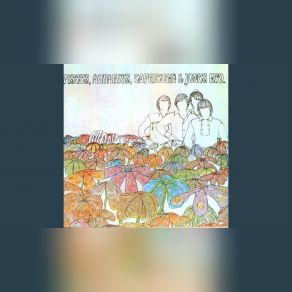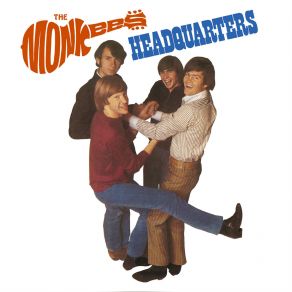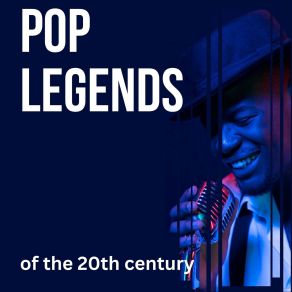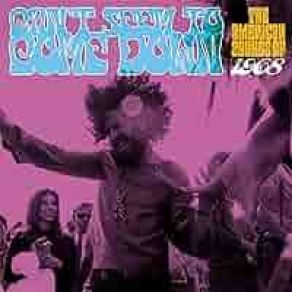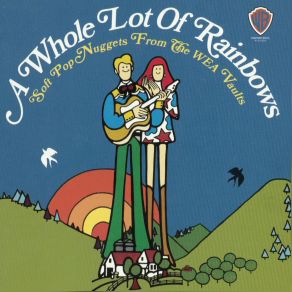The Monkees
Wikimp3 information about the music of The Monkees. On our website we have 70 albums and 31 collections of artist The Monkees. You can find useful information and download songs of this artist. We also know that The Monkees represents Pop genres.
Biography
[Edit]"Hey hey, we are the Monkees/You know we love to please/A manufactured image/With no philosophies." In 1968, the Monkees addressed their own reputation in the song "Ditty Diego (War Chant)," which summed up the bad rap they'd received in the music press since they first emerged in the summer of 1966. The Monkees were talented singers, musicians, and songwriters who made a handful of the finest pop singles of their day (as well as a few first-rate albums) and delivered exciting, entertaining live shows. But at a time when rock music was becoming more self-conscious and "serious," the hipper echelons of the music press often lambasted the Monkees, largely because they didn't come together organically but through the casting process for a television series, and they initially didn't write the bulk of their own material or play all the instruments on their records. The fact they later took creative control of their music was often overlooked, and the quality of their music, which featured the work of some of the finest session players and songwriters of the 1960s, often seemed to be beside the point. Time has ultimately vindicated the Monkees, and their music still sounds fresh and engaging decades after it was recorded, but in some circles they never fully shook being branded as "the Pre-Fab Four," no matter how far they moved from the circumstances that brought them together.
The Monkees story began in the fall of 1965, when Bob Rafelson and Bert Schneider, a pair of producers whose Raybert Productions had a deal with Columbia Pictures and their TV branch Screen Gems, came up with an idea for a television series about a rock group. Inspired by Richard Lester's groundbreaking comedies with the Beatles, A Hard Day's Night and Help!, Rafelson and Schneider imagined a situation comedy in which a four-piece band had wacky adventures every week and occasionally burst into song. The NBC television network liked the idea, and production began on The Monkees in early 1966. Don Kirshner, a music business veteran who was a top executive at Colgems Records (a label affiliated with Columbia/Screen Gems), was appointed music coordinator for the series, and Tommy Boyce and Bobby Hart, a producing and songwriting team, signed on to handle much of the day-to-day chores of creating music for the show's fictive band. A casting call went out for four young men to play the members of the group, and Rafelson and Schneider's choices for the roles were truly inspired. Michael Nesmith and Peter Tork were musicians with solid performing and recording experience who also had a flair for playing comedy, while Micky Dolenz and Davy Jones were primarily actors but had also dabbled in pop music and had strong vocal abilities. As the show went before the camera, Kirshner had Boyce and Hart take the four leads into the studio to begin recording the songs that would be featured on the show each week. While initially the cast was only going to provide vocals for material Boyce and Hart had already recorded, the producers were impressed enough with Nesmith's songwriting skills that they chose to use a few of his tunes and let him produce them. With this, the Monkees took their first step toward evolving into a proper, self-sufficient rock band.
The Monkees debuted on NBC in the fall of 1966 and was an immediate hit in the ratings, while "Last Train to Clarksville," the group's first single, had become a number one hit a few weeks earlier (the self-titled debut album would top the chart in October). Rafelson, Schneider, and Kirshner shrewdly allowed the show to promote the records and vice versa, and while the notion that television time could sell pop records was hardly new (Ricky Nelson proved that almost a decade earlier), no one had made it work with quite the success the Monkees achieved almost immediately. Dozens of Monkees-related products flooded the marketplace, from toy guitars and lunch boxes to board games and models of the custom Pontiac the guys drove on the show. In late 1966, someone got the idea of booking a few live shows with the Monkees, and recordings of their early concerts prove that while not all four were virtuoso musicians, they worked well together on-stage and were a energetic, rough-and-ready rock band who could work a crowd. As the Monkees gained confidence in their abilities as performers, they began to chafe under the restrictions imposed on them by Kirshner, who had full control over what songs they would record and who would produce and play on the sessions.
The Monkees' early recordings found them working with a stellar team of songwriters (including Neil Diamond, Carole King and Gerry Goffin, and David Gates along with Boyce and Hart) and musicians (such as Glen Campbell, James Burton, Hal Blaine, and Larry Taylor), but Nesmith and Tork in particular were eager to show off their own talents (Nesmith was responsible for some of the Monkees' most distinctive tunes), and all four were stung by the negative publicity they'd received as rock critics declared they weren't a "real" band and couldn't play their instruments (Nesmith and Tork certainly could, and Dolenz and Jones would become capable instrumentalists, but they weren't allowed to play on their earliest recordings). When the Monkees were presented with copies of their second album, More of the Monkees, in January 1967, Nesmith and Tork were furious — it was filled with material recorded for the TV show and the bandmembers had no input into its packaging or sequencing. This led to a standoff between the four Monkees, who demanded autonomy over the music they performed, and Kirshner, who didn't want to disrupt the hitmaking machine he'd helped create. Eventually, Rafelson and Schneider sided with his stars (who could not be readily replaced) and Kirshner was fired in the spring of 1967. (Kirshner would later coordinate the music for the Archies, who as cartoon characters lacked the power to rebel against their producers.)
Now calling their own musical shots, the Monkees recorded their third album, Headquarters, with Chip Douglas (aka Douglas Farthing Hatlelid) of the Turtles producing and playing bass. Outside of Douglas and a few string and horn players, the Monkees played all the instruments on Headquarters, and the album rose to number one on the charts in May of 1967, proving the group members were more than capable of making memorable records on their own (and the closing track, "Randy Scouse Git," showed the cultural changes that were making themselves known in America had not escaped the attention of TV's leading pop group). Another Monkees album appeared in November 1967, Pisces, Aquarius, Capricorn & Jones Ltd., which is generally regarded as the group's finest work; while all four Monkees played and sang on the album, they also brought a few session players in for the recordings, hitting a middle ground between the polished studiocraft of the first two LPs and the more organic sound of Headquarters. While the Monkees now had the freedom to chart their own path in the recording studio, this also led to the musicians discovering their creative differences, and by the time they recorded The Birds, the Bees & the Monkees (released in April 1968), the foursome was starting to splinter, with each member essentially producing and coordinating 25 percent of the album, and the band's collaborative energy began to dissipate.
After two successful seasons, the Monkees' television series was not renewed for the fall 1968 season, as the group hoped to launch a career in the movies. But Head, their first (and last) feature film, was a commercial disaster; it was an often clever and challenging satire of the Monkees' own curious stardom and the culture that surrounded them, but it also quite literally had no plot and confounded the younger viewers who were the TV show's strongest fan base. The soundtrack album struggled to a relatively dismal number 45 on the charts, and shortly afterwards Peter Tork opted to leave the band. The Monkees released two albums as a trio in 1969, Instant Replay and The Monkees Present, but while they both contained fine music that showed the group was continuing to mature, neither launched any major hits, and the band's commercial fortunes were clearly beginning to wane. In late 1969, Nesmith left to pursue a solo career (he'd already released an instrumental solo album, The Wichita Train Whistle Sings, in 1968), and after a final Monkees album featuring just Dolenz and Jones, 1970's Changes, the group quietly dissolved.
Nesmith went on to a critically respected and modestly successful solo career, cutting several excellent country-rock albums, and he enjoyed considerable success in the entertainment business, producing music videos and feature films as well as running a film and video label, Pacific Arts. Both Dolenz and Jones moved back and forth between acting and music, and in 1975 they teamed up with Tommy Boyce and Bobby Hart to record a new album and the foursome went out on the road, playing their new material as well as many of the Monkees' hits. Tork's music career stayed under the radar through much of the '70s, though he led a band called Release, operated a music production firm, recorded a Christmas single with Dolenz and Jones in 1976, and was courted for a solo deal with Sire Records.
The Monkees' television show stayed on the air for years in reruns after the group broke up, and in 1985, MTV presented a daylong marathon of Monkees episodes, tipping their hat to the show and the band that helped bring rock and television together. The marathon was a hit in the ratings and Monkees reruns became a regular feature on the network. That same year, producer and promoter David Fishof put together a Monkees reunion tour; while Nesmith's business commitments prevented him from joining his bandmates, Dolenz, Jones, and Tork were game, and the tour was a massive commercial success, and much of the group's back catalog bounced back into the charts. (Nesmith also made a guest appearance with the Monkees for their sold-out appearance at L.A.'s Greek Theater, and appeared with them on an MTV Christmas video.) In 1986, Dolenz and Tork cut a new single, "That Was Then, This Is Now," which was tagged onto a Monkees hits compilation and became a hit. The success of the single prompted the Monkees (again minus Nesmith) to record a new album, but 1987's Pool It! didn't fare well with critics or fans, and the members soon went their separate ways again, though Dolenz and Jones occasionally worked as a duo.
As the 30th anniversary of the Monkees' debut loomed in the mid-'90s and Rhino Records (who had reissued the group's back catalog in the 1980s) assumed full control of the group's filmed and recorded legacy and began a series of definitive reissues, another reunion tour was proposed, and the talks led to Dolenz, Jones, Nesmith, and Tork getting together to jam for the fun of it. They enjoyed the process enough that they decided to record a new album, and Justus, released in October 1996, became the first Monkees album written, performed, and produced solely by the four members of the band. The four Monkees appeared in a television special tied into the album's release (called Hey Hey, We're the Monkees), and they were set to take part in a world concert tour to promote the record. However, after a string of dates in the United Kingdom in 1997, Nesmith dropped out, and while the tour went on without him, the other three did little to hide their disappointment with Nesmith in the press. Another tour by the three-piece Monkees took place in 2001, but Tork left the show before the final dates; Tork told reporters he'd quit, while Dolenz and Jones said he'd been fired. Since then, Dolenz, Jones, and Tork have all toured as solo acts; Nesmith, meanwhile, released a solo album in 2006, Rays, and has taken up writing fiction, having penned two novels, The Long Sandy Hair of Neftoon Zamora and The American Gene.
Title: Summer The Complete US Concert Recordings (CD2)
Artist: The Monkees
Genre: Pop Rock, Psychedelic Pop
Title: More Of The Monkees [Deluxe Edition][Digital Version]
Artist: The Monkees
Title: The Birds, the Bees, & the Monkees
Artist: The Monkees
Genre: Rock, Pop, Teen Pop, Psychedelic
Title: Pisces, Aquarius, Capricorn & Jones Ltd.
Artist: The Monkees
Genre: Rock, Pop, Teen Pop, Psychedelic
Title: The Monkees Present (1969) Deluxe Edition (CD1)
Artist: The Monkees
Title: The Monkees Present (1969) Deluxe Edition (CD2)
Artist: The Monkees
Title: Headquarters Sessions
Artist: The Monkees
Genre: Rock, Folk Rock, Pop, Teen Pop, Songwriter/Lyricist, Psychedelic
Title: The Door Into Summer (Live) HD (Single)
Artist: The Monkees
Genre: Hip Hop/R&B, Blues, Jazz, Rock, Punk Rock, Country, Pop, Alternative, Indie, Classical
Title: The Door Into Summer (Live) (Single)
Artist: The Monkees
Genre: Hip Hop/R&B, Blues, Jazz, Rock, Punk Rock, Country, Pop, Alternative, Indie, Classical
Title: I'M A Believer
Artist: The Monkees
Genre: Rock, Garage Rock, Rock & Roll, Psychedelic Pop, Sunshine Pop
Title: Summer The Complete US Concert Recordings (CD3)
Artist: The Monkees
Genre: Pop Rock, Psychedelic Pop
Title: Summer 1967 - The Complete U.S. Concert Recordings
Artist: The Monkees
Genre: Rock, Pop, Teen Pop, Psychedelic
Title: Pisces, Aquarius, Capricorn & Jones Ltd. (Remastered) [Deluxe Edition]
Artist: The Monkees
Genre: Rock, Pop, Teen Pop, Psychedelic
Collections
Title: 60iger Rock 2024
Title: To The Newlyweds 2024
Title: Country Music For The Road 2024 (CD1)
Genre: Blues, World Music, Country, Folk
Title: Grillen - Party Hits 2024
Title: Schlager Und Oldies Jukebox 2024 (CD3)
Genre: Pop
Title: Timeless Classics Revisited 2024 (CD1)
Genre: Pop Rock
Title: Driving Songs 1 2024
Title: 60s Hits Sixties Greatest Music 2024 (CD2)
Genre: Pop Rock
Title: Old Money Playlist 2024
Genre: Pop Rock
Title: Canzoni D'Autunno 2024
Genre: Pop
Title: Weekend Vibe Hits (CD5)
Title: Without Borders Music (CD5)
Genre: Hip Hop/R&B, Dance Pop
Title: Songs For The Car Best Retro Hits 2024
Genre: Electronica, House, Club/Dance, Pop
Title: Kindergarten Pop 2024
Title: US Top 100 - The 60s (CD1)
Genre: Hip Hop/R&B, Soul, Rock, Punk Rock, Pop
Title: Winterparty: 80s
Title: Kerst Vibes 2024 (CD1)
Genre: Ambient, Traditional Pop Music
Title: English Christmas Songs 2024 (CD2)
Genre: Traditional Pop Music
Title: Boomer Bangers 2024
Title: Soundscapes For Travelers (CD1)
Genre: Dancefloor, Pop, Dance Pop
Featuring albums
Title: A Whole Lot of Rainbows: Soft Pop Nuggets from the WEA Vaults
Artist: Various Artists
Genre: Pop
Title: Music (From the Motion Picture "Now And Then")
Artist: Various Artists
Genre: Pop, Theatre/Soundtrack
Title: Grace Period
Artist: Apologetix
Genre: Rock, Alternative Rock, Progressive Rock, Rock & Roll, Alternative Metal, Christian Country Music
























